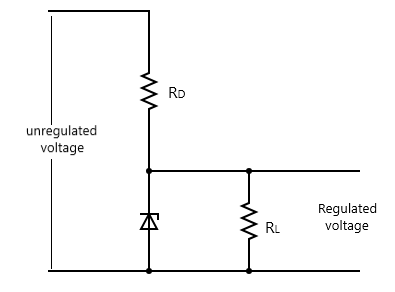Question
Question: How is a zener diode fabricated? What causes the setting up of a high electric field even for small ...
How is a zener diode fabricated? What causes the setting up of a high electric field even for small reverse bias voltage across the diode? Describe, with the help of a circuit diagram, the working of zener diodes as a voltage regulator.
Solution
The resistance of a zener diode changes with changing input voltage. Zener diodes are heavily doped on both semiconductors parts.
Formula used: In this solution we will be using the following formulae;
E=drdV where E is the electric field at a point, V is the potential difference, and r is the position or distance from a reference point (usually of zero potential).
drdV signifies the infinitesimal rate of change of the voltage or potential difference with distance.
Complete step by step answer:

For fabrication – the zener diode is made by heavily doping both the n type semiconductor and the p type semiconductor which makes up the diode.
What causes the setting up of a high electric field, even for small reverse voltage? Generally, we know that the electric field can be given as
E=drdV where V is the potential difference, and r is the position or distance from a reference point (usually of zero potential). drdV signifies the infinitesimal rate of change of the voltage or potential difference with distance. Or in its constant form E=rV
Hence, even for small voltages, if the distance is small enough as in the depletion layer of a diode, the electric field can be enormous.
The zener diode can be used as a voltage regulator as explained:
The zener diode is connected to a resistor RD as shown in the figure, it is the combination that is then connected across the changing or fluctuating resistor. Usually, the desired constant voltage is gotten across a load resistance RL .
When the input voltage is high, the resistance of the zener diode decreases. This causes the voltage drop across RD is higher. This causes about the desired voltage to be left at the output. When the input voltage is low, the resistance of the diode increases, hence the voltage drop across the resistance RD is low. Which still leaves about the desired voltage at the output.
Note:
For clarity, the voltage drop across the resistance RD is higher at lower resistance because current is higher in such case and due to ohm's law the voltage is higher at a higher current if resistance (resistance RD in this case)is constant .
